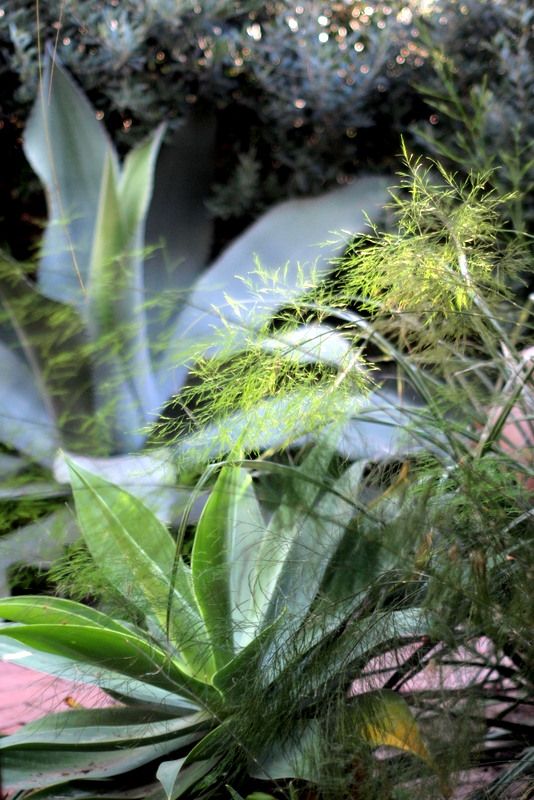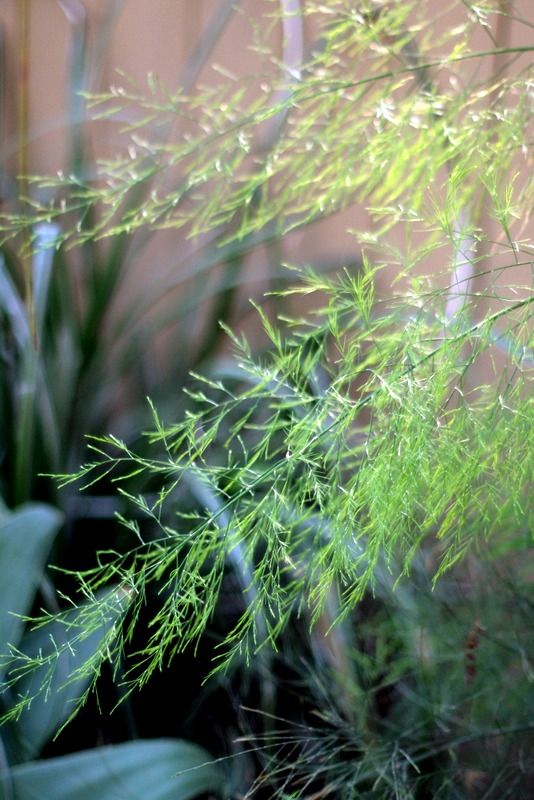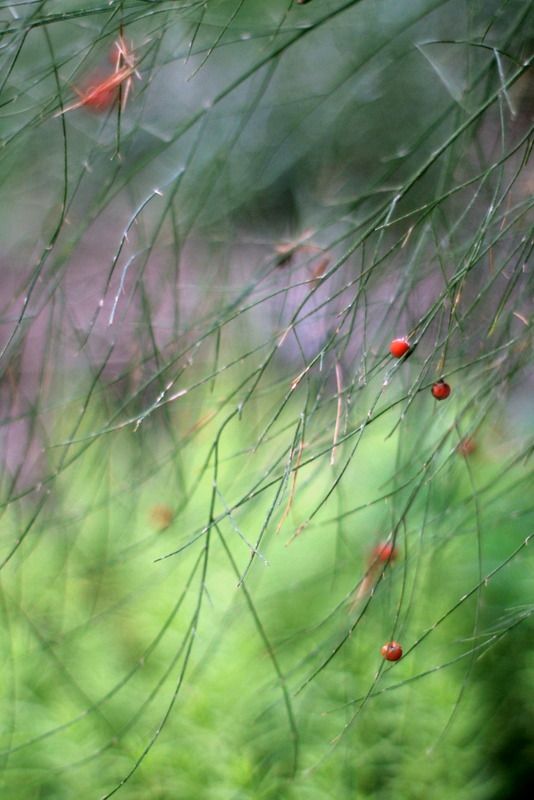There’s not a lot of fern action in my dry, sunny garden, much to my regret, but in the front garden on the north side of the house, planted in the parched gloom at the foundation line, a fern is improbably thriving behind the agaves and astelias. This frothy, arching, clumping-not-running, perfectly harmless member of the asparagus family is Asparagus virgatus.

What do all these plants have in common besides the letter A? Cast-iron natures as far as tolerating dry soil and shifting sun/shade patterns throughout the year. They probably spend more time overall in shade, which suits even the agave, A. attenuata, famous among agaves for tolerating some shade. (An Aloe marlothii recently perished, unable to handle the winter in part shade.)

And I can assure you that, although related, it is not the scary monster that most of us have learned to fear in the form of the climbing asparagus, A. scandens.

With Agave attenuata ‘Kara’s Stripes’ and Astelia nervosa in the background.

An interesting graphic quality to its stems too. I’ve never seen it look this lush before, and the clue to the improvement in its former straggly growth is that white drainspout. The small amount of rainfall we’ve had so far this winter was funneled via the new gutters and directed into downspouts, and one of the downspouts empties here. San Marcos Growers says “This plant comes from South Eastern Africa, where it typically grows along shaded waterways, so it is surprising how drought tolerant this plant is.” I can now vouch for its love of moisture as well as its drought tolerance. I would love to bulk up a big specimen in a container and see what it can do when not in sheer survival mode, as I’ve been growing it.

Typical small red berries of the asparagus family follow tiny, almost imperceptible flowers.

Unlike the ineradicable climbing asparagus, Asparagaus scandens, A. virgatus is your friend.
Plant Delights Nursery lists it in their catalogue to zone 7 and credits it for tolerating a lot more sun than I give it.
(Asparagus virgatus is my entry in Loree’s favorite plant pick for the week and Pam’s Foliage Followup.)

Asparagus retrofractus is another tough yet beautiful species, but eventually can get 6 to 8 feet tall with massive root crown. I would feel deprived without one in my garden. Your A. virgatus is on my list to start using in garden designs, so elegant!
Look at those little red berries!!! I think I grew this last year treating it as an annual, plant torture for the zonaly deprived.
That wispy, feathery foliage is the perfect contrast to the chunky leaves of the agaves. Interesting to see a fern so well adapted to dry rather than damp shade.
David, I think I’ve seen A. retrofractus in a garden in Venice. It was huge!
Loree, it’s zoned to 7-something. It just might take to living dangerously with you.
Pam, yes, this asparagus does that contrast so well.
Yeah for Asparagus virgatus! My mom used to grow this when I was a kid. I’ll look for it. As Pam said, a great complement to agaves!